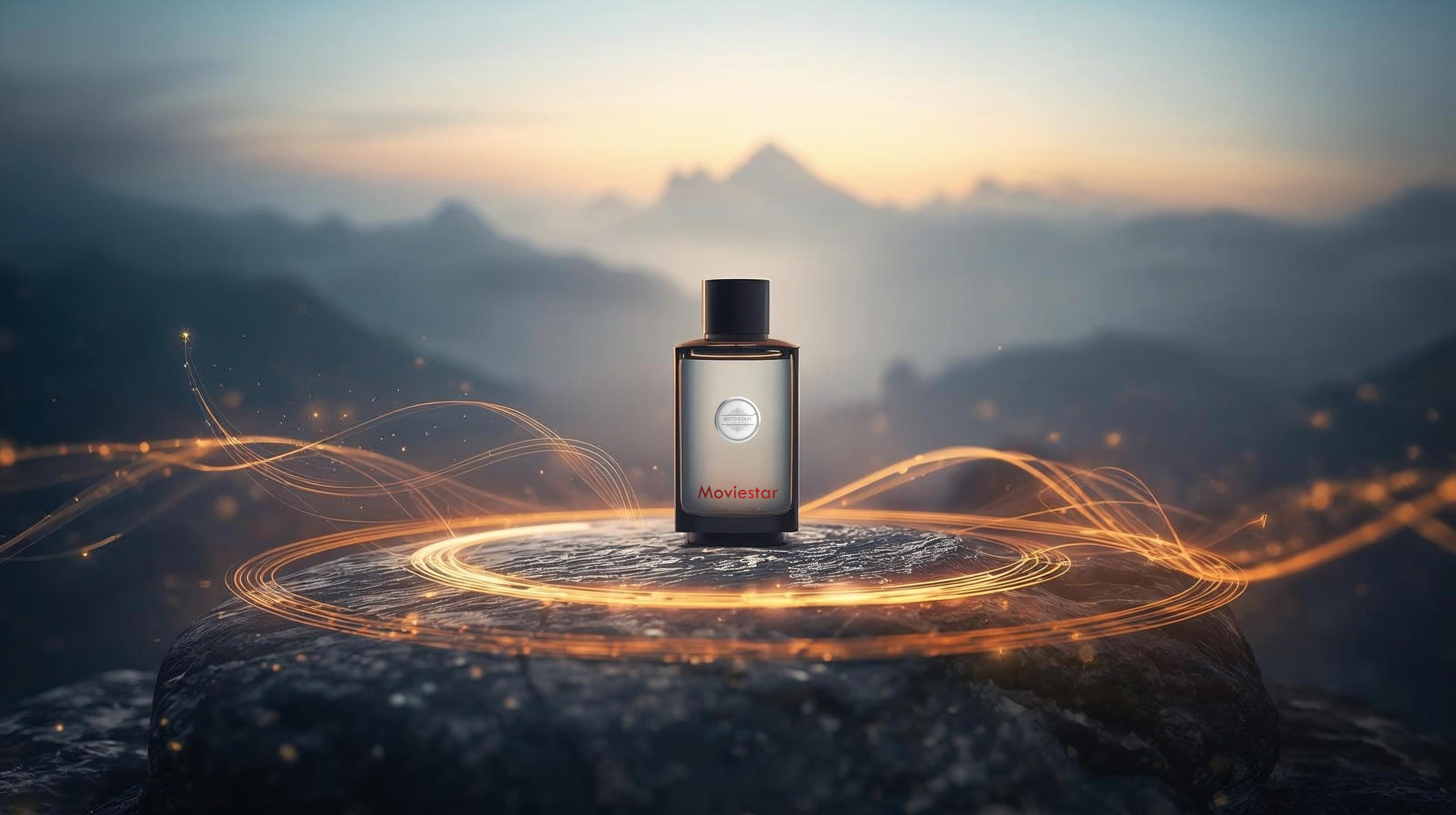
The Rich History of Attar (Ittar or Itra) in Indian Royalty & Culture
BestIndian LuxuriesShare
A whisper of fragrance has the power to transport us through time, evoking memories, emotions, and a sense of the sacred. In the grand tapestry of Indian history, scent has always been a profound narrator, weaving tales of spirituality, tradition, and unparalleled luxury. Central to this olfactory chronicle are Attar and Ittar, the soul-stirring natural perfume oils that have graced the subcontinent for millennia. Their story is not just one of aromatic excellence but also a reflection of India's deep cultural roots and the refined tastes of its royalty, extending far beyond any single dynasty into the very dawn of its civilization.
Join BestIndian™ as we unveil the captivating journey of Attar and Ittar, exploring their ancient origins, their esteemed place in the courts of Indian Royalty, and their indelible mark on Indian Culture.
Echoes from Antiquity: India's Primordial Perfumed Past

India's engagement with aromatics is not a medieval development but an ancient legacy.
- The Indus Valley Bloom (c. 3300 - 1300 BCE): Archaeological explorations in the Indus Valley Civilization have unearthed terracotta distillation apparatus and perfume containers. As Dr. Paolo Rovesti's findings highlight, these artifacts, some dating back thousands of years (an artifact from 5000 BC is noted as being on display in Taxila Museum, Pakistan ), suggest that the sophisticated art of distillation was known to the denizens of this ancient urban culture. This points to an indigenous understanding of capturing nature's essences long before it was 'rediscovered' elsewhere.
- Vedic Wisdom & the 'Gandhashastra': The Vedic period (from around 2000 BCE) further solidified the role of fragrances. The sacred Vedas list over seven hundred aromatic substances, including cinnamon, spikenard, ginger, and sandalwood, used for both sacred rituals (Homas, Havanas, Agnihotras) and therapeutic purposes. Ancient India developed its own science of odors, the 'Gandhashastra', an integral part of Ayurveda. Esteemed treatises like the Charaka Samhita and Sushruta Samhita detail processes such as 'Jalyeaya Aaswan' (water distillation), and even epic poems like the Mahabharata and the Puranas, such as the Bhagavat Geeta, describe the ceremonial use of fragrant sandalwood and rose water.
- Early Ritualistic Use: The use of botanical products in fire sacrifices (Hawan-Kunds) has been traced back to the Harappan Civilization, with evidence of wood charcoal, charred grains, seeds, and fruit remains like avla, haritaki, jaiphal, holy basil, and black pepper being used in offerings. Woods of chandana (sandalwood), deodar, and cinnamomum were also used as fuel.
The Flourishing of Attar in Pre-Mughal Royal Courts & Society

Long before the grandeur of the Mughals, various Indian kingdoms and empires recognized and patronized the art of perfumery, embedding it deeply within the social and royal fabric.
- The Gupta Golden Age (c. 320 - 550 CE): The art of crafting 'attars' and intricate 'floral waters' became particularly well-established during the Gupta period, an era renowned for its advancements in arts and sciences. Treatises like Gangadhara's 'Gandhasara' (compiled between 1200-1600 AD based on earlier texts) mention various methods of perfume preparation including decoctions, heating, mixing, and fumigation.
- Harshawardhan's Fragrant Empire (7th Century CE): Kannauj, the city that would become the undisputed perfume capital of India, rose to prominence during the reign of Emperor Harshawardhan of the Vardhana dynasty. His patronage was so significant that he is known to have imposed a tax on vetiver grass (khus), a key perfumery ingredient. Banabhatta, Harsha's court poet, vividly described the use of incense in royal ceremonies, such as the wedding of Princess Rajyashree. Notably, archaeological findings of 'Gandhi-kan' (perfumers') seals suggest that the state recognized the rights and importance of attar makers even two millennia ago, predating Harsha's rule.
- A Land of Aromatic Abundance: Kannauj's historical names like 'Kanyakubja', 'Gandhipur' (City of Perfumes), and 'Kusumpur' (City of Flowers) reflect its deep-rooted connection to this craft. Nourished by five sacred rivers including the Ganges, the region was rich in the botanical diversity essential for attar production.
- Ancient Trade Hub: The fame of Indian spices and aromatics is older than recorded history, with trade links extending to Mesopotamia, Arabia, and Egypt. Spices were incredibly valuable; historical accounts note that in the middle ages, a pound of ginger was worth a sheep, and pepper was counted in individual peppercorns, with a sack being worth a man's life. This robust trade underscores the global demand for India's aromatic treasures.
The Mughal Era: A Zenith of Perfumed Opulence

The Mughal emperors (16th-19th centuries) are famously associated with a period of extraordinary patronage for Attar and Ittar. Their courts were centers of immense luxury and refinement, where fragrance played a vital role.
- Imperial Perfumeries: Emperor Akbar, known for his administrative acumen, maintained a dedicated department for perfumery, as detailed in the Ain-i-Akbari. This ensured a constant supply of the finest attars and incenses for the royal household.
- Jahangir and Noor Jahan – A Rosy Legacy: Emperor Jahangir and his influential queen, Noor Jahan, are legendary for their love of attars, particularly rose. An official named 'khushbu-daroga' was appointed under Jahangir to supervise the proper supply of attars. A famous anecdote, often attributed to Noor Jahan or her mother Asmat Begum, tells of the discovery of 'Rooh Gulab' (pure rose attar) from the oily film left by rose petals in a warm bath. This royal fascination significantly boosted the attar industry.
- The Nawabs of Awadh: After the Mughals, the Nawabs of Awadh (Lucknow) continued this lavish tradition. Their courts were renowned for cultural sophistication, and they became great patrons of Kannauj's perfumers. Stories abound of their extravagant use of perfumes, such as Nawab Ghazi-ud-Din Haidar Shah having fountains of attar in his chambers.
Attar: Woven into the Cultural and Spiritual Soul of India

Beyond the gilded courts, Attar permeated various facets of Indian life:
- Auspicious Beginnings: The application of Ittar marks auspiciousness in weddings, festivals, and important ceremonies, symbolizing joy, purity, and divine blessings.
- Sacred Connections: Specific attars are often used in religious ceremonies and offered to deities in temples and mosques, reflecting a continued link between fragrance and spirituality. Sandalwood and Rose are particularly favored.
- An Emblem of Hospitality: Offering Attar to guests has long been a cherished custom, a gesture of respect and warm welcome.
- Healing Traditions: Ayurveda has always valued the therapeutic properties of natural essences found in attars, using them to calm the mind, soothe the body, and balance energies.
The Enduring Craft: A Testament to Timeless Artistry

The traditional method of creating Attar, primarily the 'Deg Bhapka' hydro-distillation process used in Kannauj, is an art form in itself. It involves meticulously distilling fresh botanicals over several hours or days into a base oil (traditionally sandalwood) using copper stills, fire, water, and immense skill passed down through generations – a process entirely free of alcohol and synthetic additives. The uniqueness of this Indian perfumery technique lies in the blending, mixing, and maturing taking place all together in the same receiving vessel.
The Legacy Reimagined: From Ancient Elixirs to Modern Luxury

The rich history of Attar and Ittar in Indian royalty and culture speaks of a profound connection to nature and an unparalleled appreciation for olfactory beauty. This enduring legacy of purity, craftsmanship, and natural richness continues to inspire. Dr. P. K. Gode, an Indologist, observed that "The degree of excellence and refinement of cosmetics and fragrances at any given period of civilization remains to be the index of the cultural development of that period".
Today, this heritage is being reinterpreted for the modern connoisseur. While traditional Attar holds its esteemed place, the desire for these pure, natural perfume principles, combined with contemporary sophistication in scent complexity and presentation, has given rise to Luxury Perfume Elixirs. These exquisite creations, such as those by BestIndian™, capture the soul of traditional Indian perfume oils – their natural essence, alcohol-free purity, and depth – but elevate them through artisanal blending and luxurious presentation. They are the modern evolution, born from ancient wisdom, designed for those who seek the ultimate in natural, personal fragrance.
The journey of fragrance in India is a testament to its timeless allure. From the sacred fires of antiquity and the perfumed courts of emperors to the refined elixirs of today, it’s a story that continues to enchant.
To explore fragrances that embody this rich heritage with a touch of modern sophistication, discover the BestIndian™ Luxury Perfume Elixirs collection.
Journey further into the world of exquisite, alcohol-free natural perfumes.






